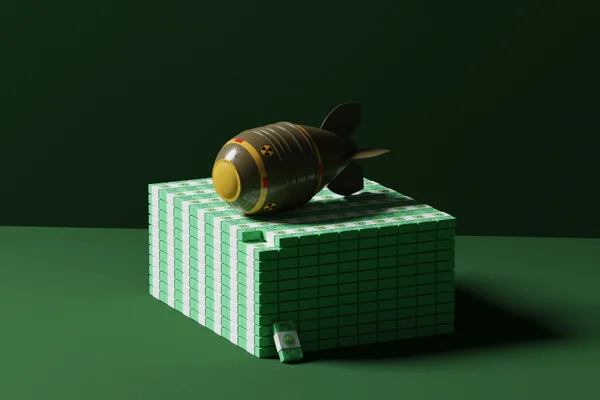Elon Musk, the tech billionaire known for ambitious promises, now faces a unique challenge: fulfilling his commitment to reducing government spending. As head of the Department of Government Efficiency (DOGE), Musk has pledged to cut $2 trillion from the federal budget—a daunting task, but one with an obvious target: nuclear weapons modernization.
The U.S. nuclear modernization program, initially proposed in 2010 under President Barack Obama, has nearly doubled in cost from its original $1 trillion estimate, and experts predict further increases by 2050. With former President Donald Trump expressing concerns about excessive nuclear spending, Musk’s cost-cutting office has an opportunity to make a bold move—one that could enhance national security while reducing unnecessary expenditures.
The Rising Costs of Nuclear Modernization
The U.S. nuclear triad—comprising land-based intercontinental ballistic missiles (ICBMs), submarine-launched ballistic missiles (SLBMs), and strategic bombers—has been slated for a sweeping upgrade. The cost of this modernization effort has skyrocketed due to several factors:
- ICBM Program: The cost of developing new intercontinental ballistic missiles has surged by 37% in the past year alone, leading to a critical breach of federal budget rules.
- Plutonium Pit Production: The National Nuclear Security Administration (NNSA) has faced significant delays and cost overruns in manufacturing plutonium pits, essential components of nuclear warheads. Initial estimates of $9 billion have ballooned to as much as $37 billion.
- Over-Budget Nuclear Reactors: The U.S. and other nations have struggled with nuclear infrastructure costs, exemplified by over-budget projects in France and $50-billion-plus highway projects in the U.S.
These skyrocketing costs raise serious concerns about the efficiency and necessity of such expenditures.
The Security Argument Against Nuclear Expansion
Beyond budget concerns, expanding the nuclear arsenal contradicts the fundamental lesson of the Cold War: more nuclear weapons do not make the world safer. Key concerns include:
- Nuclear Winter and Global Famine: Even a limited nuclear conflict could result in catastrophic global consequences, including a prolonged nuclear winter and mass starvation.
- China’s Response: China is reportedly increasing its nuclear arsenal in response to U.S. modernization efforts, fueling an arms race.
- New START Treaty Expiration: With the expiration of the U.S.-Russia New START Treaty approaching, reducing nuclear stockpiles could serve as a vital diplomatic move to prevent a renewed arms race.
The Project 2025 Influence
Despite the potential benefits of nuclear de-escalation, obstacles remain. The far-right-authored Project 2025, a strategic blueprint for a future Trump administration, advocates expanding and modernizing the U.S. nuclear force to counter both Russia and China. Among its proposals:
- Development of nuclear-armed, sea-launched cruise missiles.
- Restarting nuclear testing, despite historical evidence linking such tests to cancer and environmental devastation.
- Deployment of space-based weapons, which could provoke international conflicts.
Can Musk and Trump Take on the Military-Industrial Complex?
Elon Musk has already questioned exorbitant military spending, including criticism of the overpriced F-35 fighter jet. If he truly wants to achieve his $2-trillion budget reduction, challenging nuclear modernization could be a historic and meaningful move. More than just a financial decision, this choice could redefine U.S. national security policy for decades to come.
FAQs
Why is the U.S. modernizing its nuclear arsenal?
The U.S. government argues that modernization is necessary to maintain a credible deterrent against evolving threats from adversaries like China and Russia.
What are the estimated costs of nuclear modernization?
Originally projected at $1 trillion, the cost has nearly doubled and is expected to increase further by 2050.
How does nuclear modernization impact global security?
Increased nuclear capabilities can escalate tensions and provoke an arms race, making the world less stable.
What role does Project 2025 play in nuclear policy?
Project 2025 advocates expanding and modernizing the U.S. nuclear arsenal, contradicting efforts to reduce global nuclear threats.
Could eliminating nuclear modernization save the federal budget?
Cutting back on nuclear modernization could significantly reduce government spending and free up resources for other critical needs.
Conclusion
Elon Musk and the DOGE office have a golden opportunity to rethink U.S. nuclear policy. With Trump already expressing concerns over excessive nuclear spending, a push to de-escalate could align with both fiscal responsibility and global security. Rather than fueling a renewed arms race, the U.S. could lead diplomatic efforts to curb nuclear proliferation—ultimately making the world a safer place while saving billions in taxpayer dollars.
If Musk truly wants to make history as a cost-cutting innovator, eliminating unnecessary nuclear weapons could be his defining achievement.

